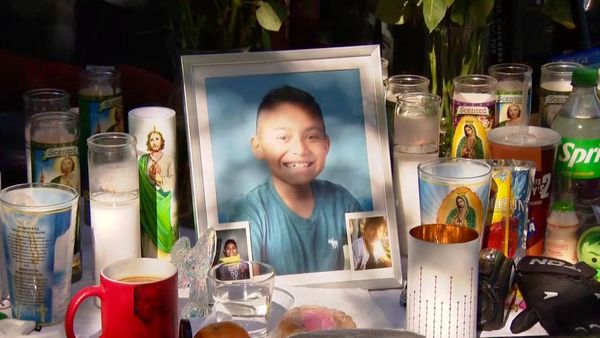
Mike Dunleavy, the governor of Alaska, has asked Donald Trump to declare a major disaster after a powerful storm devastated villages in the state’s south-west, displacing 1,500 people and prompting large-scale air evacuations.
The state’s senators and congressman urged the president to approve the declaration to allow additional federal resources into the region to repair housing and utilities before winter. The scale of the disaster has surpassed the state’s ability to respond, Senators Lisa Murkowski and Dan Sullivan, and Nick Begich, the Alaska congressman, wrote.
“This significant storm affected thousands of miles of coast, spanning the Aleutian Islands to the North Slope,” the letter to Trump states. “Immediate federal assistance is needed to support Alaskans recovering from the damage of this storm and to mitigate the impact of future severe weather events.”
The remnants of Typhoon Halong hit remote Alaska Native communities in the Yukon-Kuskokwim Delta over the weekend, battering the area with fierce winds, rain and record-breaking storm surge that sent water into homes and caused some to float off their foundations. At least one person was killed and two others remain missing.
The state established makeshift shelters that soon swelled to hold about 1,500 people, an extraordinary number in a sparsely populated region where communities are reachable only by air or water this time of year. Before evacuees were transported to larger shelters, as many as 1,000 people were being housed in just two local schools, Alaska Public Media reported earlier this week. But conditions were challenging, with limited power and bathroom access, and the state began evacuating people via plane to larger shelters in Anchorage, about 500 miles (805km) away.
Authorities are still evaluating the full scale of the damage, and destruction was extensive. Residents reported that the storm caused chaos, rocking communities on the south-west like an earthquake and sending waves into their houses.
In the Alaska Native village of Kipnuk, Alexie Stone, who was with his brothers and children, said over the weekend he could look outside and see under the water, like an aquarium. A shed drifted toward them, threatening to shatter the glass, but turned away before it hit.
The house came to rest just a few feet away from where it previously stood, after another building blocked its path. It remains uninhabitable, along with most of the village.
“In our village, we’d say that we’re Native strong, we have Native pride, and nothing can break us down. But this is the hardest that we went through,” Stone said on Thursday outside a shelter in the Alaska Airlines center in Anchorage. “Everybody’s taking care of everybody in there. We’re all thankful that we’re all alive.”
Stone’s mother, Julia Stone, is a village police officer in Kipnuk. She was working last weekend when the winds suddenly picked up and her police cellphone began ringing with calls for help from residents – some who reported that their houses were floating. She tried to reach search and rescue teams and others to determine if there were available boats to help, but the situation was “chaos”, she said.
“It’s a nightmare what we went through, but I thank God we are together,” she said.
Kipnuk and Kwigillingok, the hardest-hit communities, saw water levels of more than 6ft. In Kipnuk, a village of about 700 people and about 121 homes were destroyed and in Kwigillingok, three dozen homes drifted away. In the village of Napaskiak, water, sewer and well systems are inoperable.
The disaster has brought renewed attention to Trump administration cuts to grants aimed at helping small, mostly Indigenous villages prepare for storms or mitigate disaster risks.
Earlier this year, the administration canceled a $20m US Environmental Protection Agency grant to Kipnuk, which was inundated by floodwaters in this weekend’s storm. The grant was intended to protect the boardwalk residents use to get around the community, as well as 1,400ft (430 metres) of river from erosion, according to a federal website that tracks government spending.
In the aftermath of the storm, Alaskans have raised more than $1m to support evacuees.







